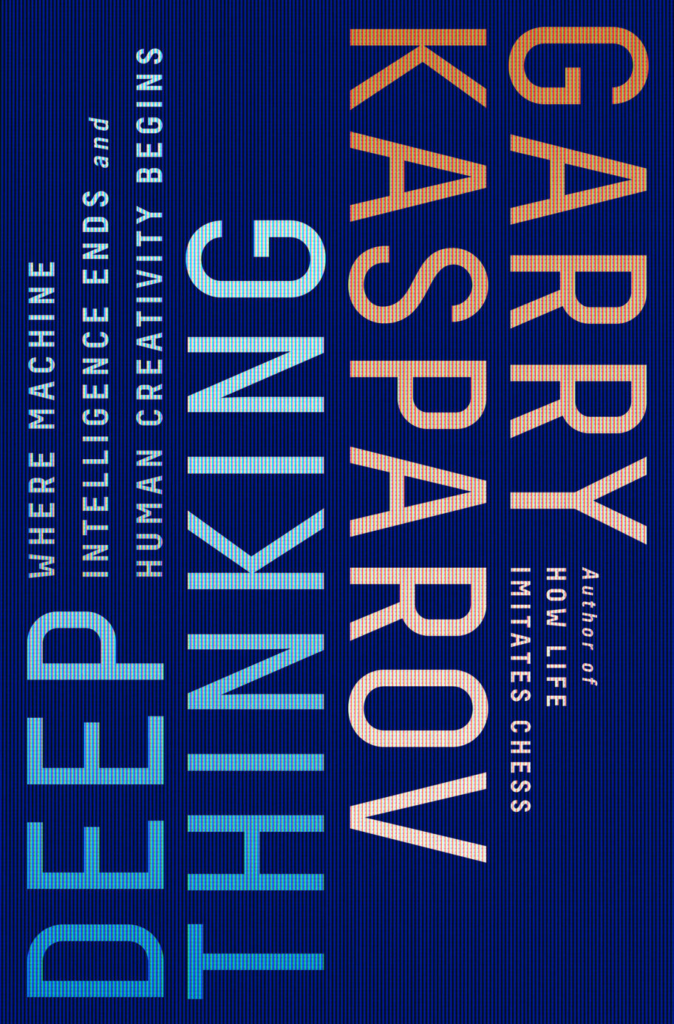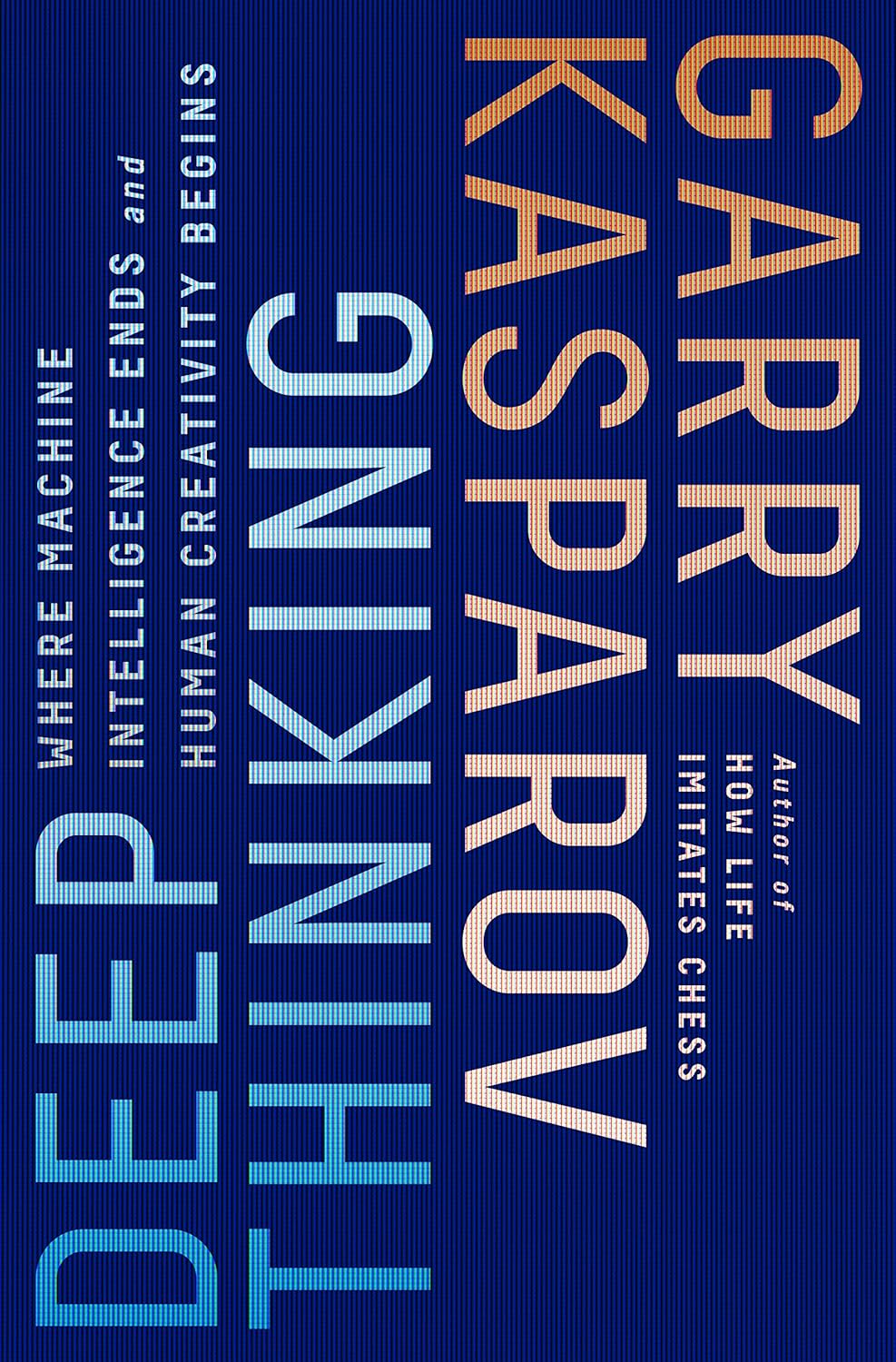I once read the book titled “Deep Thinking: Where Machine Intelligence Ends and Human Creativity Begins” written by Garry Kasparov, who is a former world chess champion and is widely considered to be one of the finest players in the history of the discipline.
Here’s what I think.
Initial Thoughts
I was intrigued by his thoughts on chess engines and the turning points that mark the beginning of human creativity, which machines cannot comprehend.
Not only is Kasparov a legendary figure in the world of chess, but he is also a strong advocate for human rights and a very outspoken opponent of the dictatorship of Vladimir Putin.
Additionally, he is a participant and a witness to a historical event that altered people’s perceptions about artificial intelligence.
This event was his match against the IBM supercomputer Deep Blue in 1997, which he lost by a very small margin.
He reveals his side of the tale for the first time in this book, exposing his thoughts, feelings, and tactics throughout the match. This book is the first installment of his series.
In addition, he provides a detailed account of the history of chess and artificial intelligence, beginning with the game’s ancient beginnings and continuing all the way up to the most recent advancements in machine learning and neural networks.
He tackles the philosophical and ethical challenges brought by the emergence of intelligent robots and provides his hopeful vision for the future of human creativity and partnership with technology.
In “Deep Thinking”, Garry Kasparov recounts his experience of playing against the IBM supercomputer Deep Blue in 1997, which marked a turning point in the history of artificial intelligence. He also discusses the history of machine intelligence through the lens of chess, and how it can be used to unlock the secrets of human and machine cognition.
The book is an interesting and informative read, full of tales, analysis, and comments.
Kasparov writes with passion, humor, and honesty, revealing his own experiences and ideas. He does not shy away from exposing his faults, concerns, and anxieties, nor from critiquing the flaws and prejudices of his opponents, both human and mechanical.
He also does not hesitate to acknowledge the accomplishments and possibilities of artificial intelligence and to counter the widespread misunderstandings and anxieties about it. He contends that robots are not a danger to human intellect, but a means to increase it.
He pushes for a symbiotic partnership between people and robots, where one complements the other’s strengths and deficiencies. He asks for a deep thinking method, where people apply their creativity, intuition, and empathy to advise and enhance the machine’s logic, data, and speed.
The book is not just a biography of a chess champion, but also a manifesto for a human-centric approach to artificial intelligence. It is a book that will appeal to chess aficionados, technology enthusiasts, and everyone interested in the future of civilization.
It is a book that will make you think carefully about yourself, your potential, and your position in the world. It is a book that will encourage you to embrace the difficulties and possibilities of the digital era and unleash your own creativity and intellect.
Summarised Content of the Book
This 304-page work is accompanied by an introduction, eleven chapters, and a conclusion.
- Chapter one talks about the brain game ‘Chess’.
- Chapter two talks about the rise of chess machines.
- Chapter three talks about the battle of Human vs. machine in relation to creativity.
- Chapter four discusses what really matters to machines.
- Chapter five is a section that pokes into the topic of chess being a sport with relation to how masters blitz a lot of moves in seconds showing the physical prowess of the game.
- Chapter six talks about what really happens in the arena of the game and the perceptions of engines playing chess.
- Chapter seven talks about the author’s personality of being a sore loser, especially at chess, and how that attribute has contributed positively to him becoming the greatest of all time.
- Chapter eight talks about the Deep Blue Machine and the chips that it used. More importantly, it explained that the designer of those chips was equally the inventor of the Unix Operating System which is the central point that runs Apple, Android, Macs, and Linux.
- Chapter nine talks about all the intricate stories surrounding the games between Deep Blue Machine designed by IBM and Kasparov which includes before and during the match. It emphasizes how important the match was that so many media walls had the news broadcasted.
- Chapter ten talks about the history and happenings surrounding world championship matches in times past which includes that of Fischer vs. Spassky and Karpov vs. Korchnoi.
- Chapter eleven talks about the blend of humans and machines with regards to chess and other disciplines which machine seems to stand out.
Quotes / Wise Sayings of Garry in the Book
Some of the quotes from the book (and I paraphrase) are:
– “To become excellent at something you have to know how to apply fundamental ideas. To become successful at it, you have to know when to break those standards.”
– “Focusing on your strengths is needed for optimal performance, but correcting your deficiencies offers the potential for the largest improvements.
– “The expression ‘it’s better to be fortunate than excellent’ must be one of the most stupid homilies ever heard. In practically any competitive endeavour, you have to be damn good before luck can be of any value to you at all.”
– “Believe nothing you hear, and just one half that you see.”
– “If you program a machine, you know what it’s capable of. If the machine is programming itself, who knows what it may do?”
Who is This Book For?
This book is for anybody interested in the nexus of chess, artificial intelligence, and human creativity.
It is particularly ideal for chess lovers, technology enthusiasts, and anyone who wishes to benefit from Kasparov’s personal and professional experiences.
The Advantages Of The Book
Well, some of the real advantages of the book are:
It offers a first-hand narrative of one of the most well-known moments in the annals of AI and chess history—the 1997 showdown between Kasparov and Deep Blue.
From the standpoint of a human rights activist and a chess grandmaster, it provides a unique perspective on the advancement and implications of AI.
It provides a creative and empathic vision of human-machine cooperation while delving into the philosophical and ethical issues brought up by the development of intelligent technologies.
It also pushes and encourages readers to reflect carefully on the role of technology in their lives and the destiny of mankind.
What I Don’t Like About The Book
– After reading this book, I had the impression that it was defensive, repetitious, and too self-indulgent. In my opinion, Kasparov devotes too much attention to his personal complaints and conspiracy ideas, and not enough to the larger ramifications of artificial intelligence.
In addition, I would argue that Kasparov is out of touch with the realities of technology and society, which raises doubts about the uniqueness of his optimism and future vision.
– Another thing is, the book’s poor writing, organization, and editing are further drawbacks. The book’s arguments seemed nebulous.
In his written comments, Kasparov came to be seen as conceited, prejudiced, and uninformed about the most recent advancements in AI.
For someone like myself who is more of a chess player than a true artist or historian, the book also looked too technical, too historical, or too philosophical.
– Kasparov seemed too sentimental, overly subjective, and overly nostalgic when he was delving deeply into his study of his encounter against Deep Blue.
His conception of the cooperation between humans and machines was too utopian, overly hopeful, and too nebulous.
It’s easy for me to infer that this is less of a scientific investigation into AI and more of a personal reminiscence.
Final Takeaways
Not all chess players will adore reading this. as there are no diagrams within the book.
If you adore things that have to do with AI, and how it functions and want to know how this could potentially relate with humans to give a higher form of creativity then you probably need this book.
If you are a historian, philosopher, artist of the human mind, or a knowledgeable person in technology, then this book will likely interest you.

